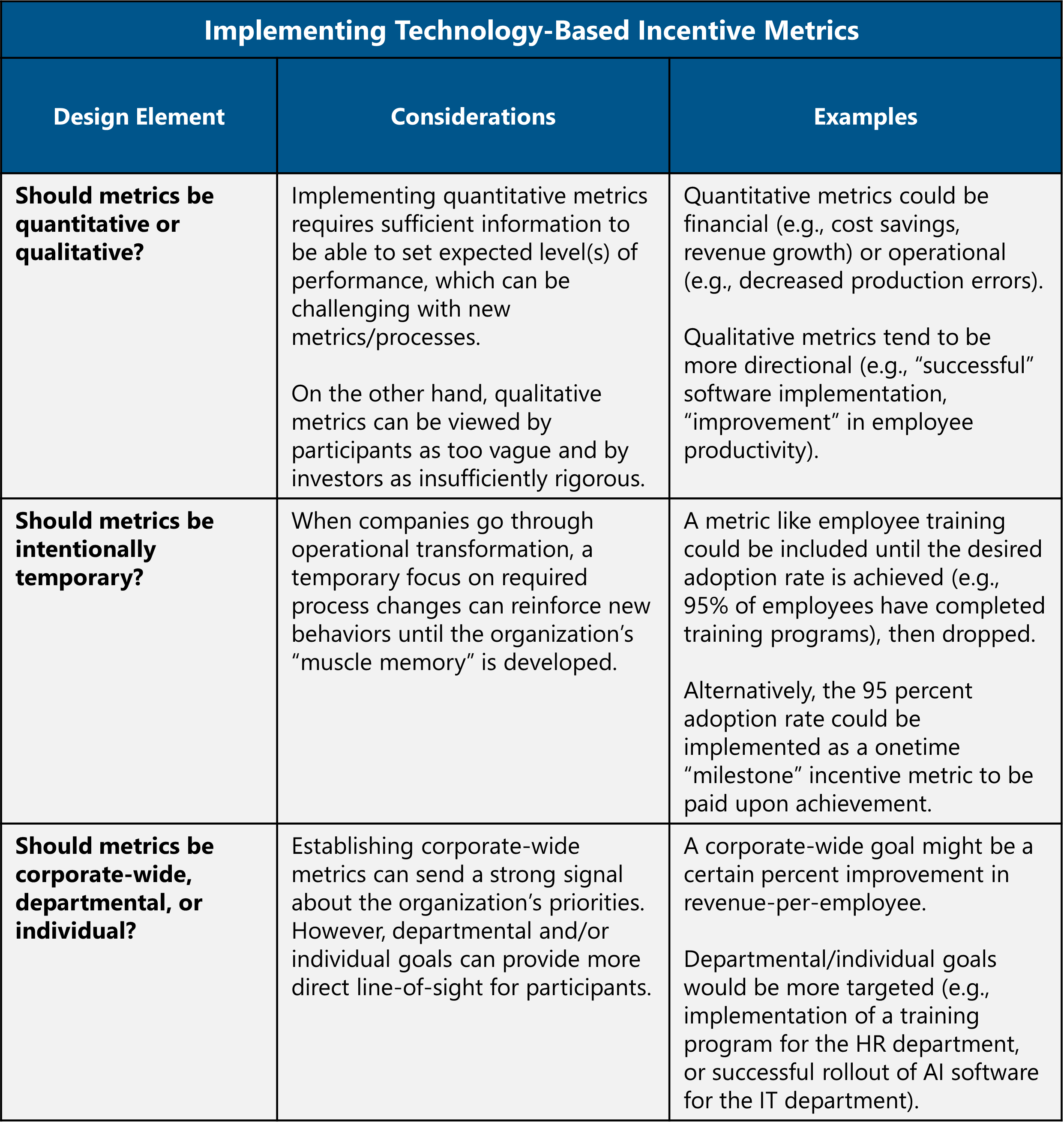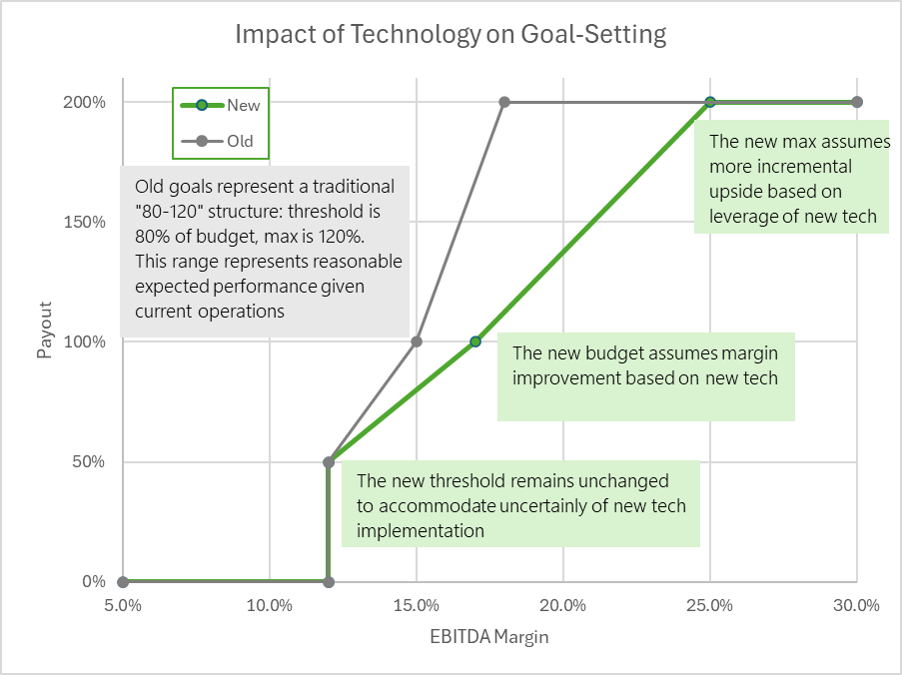
Article | Nov 2024 | NACD
Technology Oversight and the Role of the Compensation Committee
How the compensation committee can help infuse technology proficiency and optimization into the fabric of the organization.
Editor's Note: Pearl Meyer is a strategic content partner for the National Association of Corporate Directors (NACD). Pearl Meyer is an active participant each year on the NACD Blue Ribbon Commission (BRC) and a contributor to its annual BRC reports—signature publications that propose new principles and practices to address the most critical boardroom issues. The following article was published in the director's toolkit for adopting recommendations in the 2024 BRC report Technology Leadership in the Boardroom: Driving Trust and Value.
It’s easy to see how the compensation and human capital committee of any given board could believe technology and data are central to their company’s future, and at the same time, judge that it’s too early for this shift to impact its core committee responsibilities. As a surprising amount of the compensation committee’s work still looks back, not forward, committee members may feel insulated from the coming impacts of disruptive technology and new innovations.
For example, financial measures by their nature must reflect what has already happened, and CEO succession planning—even when proactive—likely considers existing required characteristics and experiences, rather than what will be needed in a future leader. However, forward-looking compensation committees need to consider how to integrate proficiency in technology into their core committee oversight responsibilities of executive compensation design and succession planning.
One way to begin infusing technology into the fabric of the organization includes an automatic consideration of it within each of the core responsibilities of the compensation committee. Below are three practical guides for integrating technology into the committee’s work:
- Identifying your organization’s technology value drivers that can serve as goals within executive compensation incentive plans;
- Developing incentive plans with goals that align to technology and data strategy; and
- Infusing ongoing succession planning with an eye to future-state leadership needs.
Identifying Your Technology and Data Value Drivers
Understanding value drivers is an important component for identifying specific goals that can be leveraged in incentive plans that align the organization’s focus and behaviors around its technology strategy. Value drivers also help the board understand the skills and attributes required in leadership to continue delivering value from technology.
Complicating this task are the hundreds of potential technology factors a compensation committee could consider linking to executive goals and incentives.
To help compensation committee members evaluate these factors and effectively pinpoint areas that can drive value and serve as goals in executive incentive plans, we recommend a value-driver analysis. Each company could start by approaching technology and data through the lens of its business model and culture, evaluating which technology factors are clearly linked to the business strategy, and further narrowing the set based on which have the most impact in the near term and which might drive long-term value creation. This narrowed list can then be the basis for crafting goals which are included in executive compensation and incentive plans.
Value-Driver Analysis and Links to Compensation: Key Considerations
Building on past best practices, companies can consider the following to identify specific technology and data value drivers:
- Balance the leading and lagging metrics that matter when choosing financial performance metrics. This can be done by using the same methodology used to determine the nonfinancial metrics linked to technology and data.
- Design your pay programs to align with your value drivers and clearly outline to plan participants how they can get from point A to point B.
- Finally, don’t underestimate the role compensation can play in communicating priorities. Including incentives based on technology and data in your compensation plan signals its importance and can spur the process of embedding it into the business and the culture.

Including Technology Impacts in Incentive Plan Goals and Metrics
As technology and data capabilities become key drivers of value, they will change both what some companies do and how all companies operate. As this shift takes place, compensation committees will need to change the way they set goals to appropriately focus attention on new and promising technology value drivers. To begin, it may change the goals themselves. For example, in recognition of its critical role in the technology ecosystem and the launch of a new security initiative, Microsoft (MSFT) recently changed its executive compensation plan so that it holds executives responsible for cybersecurity.

Another, perhaps less obvious, shift could be much larger deltas in goal ranges (e.g., the incremental difference between threshold, target, and maximum performance goals) for existing incentive metrics. The uncertainties of technology implementation may require additional downside leeway for threshold goals.
Likewise, there may be an exponential upside to a goal enabled by technology that isn't feasible today. For example, in the illustration below, a company with an EBITDA Margin metric might extend the performance range to accommodate the anticipated impact—and uncertainty—of technology enhancements to operations.

Framework for Future-Proofing Your Leadership and Succession Planning
For the most diligent and effective human capital and compensation committees, succession planning is a priority, and in the best cases, it is an ongoing exercise—one that continually refines the identified skills and experiences needed in the organization's future CEO.
New innovations and the speed of technology change now make exceptional leadership, the ability to plan for the unexpected, and the courage to act swiftly and decisively prerequisites for executives and board success. And the value of an open approach to continuous learning, particularly in emerging technologies, cannot be underestimated.
There are two particularly important areas in a future-proof, technology-centered leadership model: emerging strategic and organizational attributes. Compensation and human capital committees, as well as nominating and governance committees, can incorporate these characteristics into their current CEO performance evaluations and skills matrices for future CEOs.
Future-Proof Leadership Attributes



Incorporating the Commissions 10 Recommendations into Your Compensation Committee Agenda



